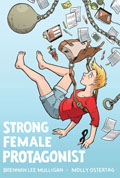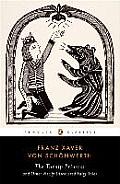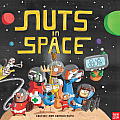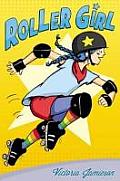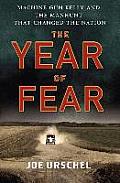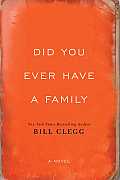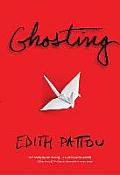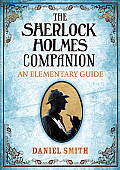Link to this review in the form of a comic strip by billba tagged graphic novel • coming of age • superhero
Link to this review by wally tagged short stories • classic
In 2009, a trove of century-old manuscripts was unearthed in a German archive containing some 500 previously uncollected fairy tales. Schönwerth, who was admired by the Brothers Grimm, had noted the decline of the oral tradition in his native country and asked people to tell him tales so that he could preserve them. This book arranges seventy-two of the stories he saved according to topic: magic and romance, enchanted animals, otherworldly creatures, legends, tall tales, and tales about nature.
Why I picked it up: I had a two-volume set of Hans Christian Andersen and the Brothers Grimm when I was a boy, and when I saw this advertised in an issue of Unshelved, I had to round out my knowledge of European fairy tales. (And yes, I know I’m still missing some Perrault.)
Why I finished it: Andersen created most of his tales, and the Grimms elaborated, sanitized, and fancified the tales they collected, so it was a real pleasure to read what are essentially clean recordings of tales told around hearths in 19th century Germany. There were a lot more boy heroes than we read about in Grimm, such as in the tale of King Goldenlocks. As a boy Goldenlocks carelessly throws a ball into the cage of a wild man his father has captured and agrees to free the man in exchange for the ball. His father is furious and orders the execution of whoever freed the man, including his only son, who is taken to the woods to be killed. His executioners agree to bring the king a pig’s tongue as proof of the boy’s death. The tale goes on from there, but clearly contains elements of other tales (like Snow White), revealing the untamed spread of stories.
It’s perfect for: Maria, who is probably overly familiar with most fairy tales and their patterns and so would love the unpredictable tale “The Snake’s Treasure.” In it, a shepherd finds a beautiful woman on a mountaintop who reveals she has a treasure and that she is imprisoned in the form of a snake. All he has to do to free her is to find her among a full grotto of snakes, kiss her, take the golden key from her mouth, and reap the rewards. The story ends on a strange note: he does not bring along three men, as she suggests, to help with the task, and he fails to retrieve the key.
Link to this review by geneambaum tagged humor • picture book • science fiction
A starship of the Forest Fleet is returning from its long mission to retrieve a mythical snack, the Lost Nuts of Legend. There’s no food left on board, and the crew can’t find their way home (someone ate part of the map). They stop at a space station café, but all the food is gone there, too. Will they be able to keep Squirrel (Nut Expert) from eating the cargo long enough to get directions home? Can they keep the Nuts of Legend out of the hands of the World’s Best Evil Overlord?
Why I picked it up: The yellow-, blue-, and red-shirted crew animal members on the cover indicated this was going to be heavily Star Trek influenced. Plus the fox holding a chicken cracked me up.
Why I finished it: Right from the front endpapers, it was funny. There I learned that Fox is starship’s Poultry Officer, and that their ship, a Super Stealth Covert Cruiser, contained not only a toilet (in use by Beaver, a red-shirted engineer), but also a library and a bunch of octopus-like stowaways. And the fun never stopped — the Commander makes log entries from a log-shaped communicator, there’s a planet full of aliens that are allergic to nuts, and then there’s The Death Banana, a space station (or it may be a ship, it’s hard to tell) that’s been terrorizing space since 1977.
Readalikes: There are also a few Star Wars references in this book. My favorite are the small, cuddly, bear-like inhabitants of a forest moon. The crew doesn’t seem to notice that the furry creatures are trying to eat them. Kids young and old who enjoy this would also have fun reading Jeffrey Brown’s Star Wars: Jedi Academy graphic novels which will give them a chance to laugh at Yoda, Wookiees, and practical jokes that use the Force.
Link to this review by geneambaum tagged graphic novel • coming of age
After Astrid’s mom takes her and her best friend Nicole to the roller derby for “an evening of cultural enlightenment,” Astrid decides she’s going to become a roller girl. She signs up for Junior Roller Derby Camp even though she can’t skate.
Nicole isn’t as into it. The hitting and falling scare her. She does support Astrid, and even gives her rainbow socks so that Astrid can be more like her hero, Portland Rose City Rollers jammer Rainbow Bite. But when Nicole opts to attend dance camp and becomes friends with Rachel (a bossy jerk who likes to talk about boys and makeup), she and Astrid start to drift apart.
Why I picked it up: I’ve always wanted to go to the roller derby, but have never quite made it.
Why I finished it: It reminded me of so many things about my daughter, who is about to turn thirteen. When she started taking judo, it was just like when Astrid began to skate — the first thing they both needed to learn was how to fall, which wasn’t much fun. Astrid dyes her hair to be fearless; my daughter just did the same thing. And they’re both on a journey to figure out who their real friends are.
I also loved the punny nicknames, both of the pro rollers and the young women at camp: Scald Eagle, Scrappy Go Lucky, Pandamonium, Scream Soda, and Braidy Punch were some of my favorites. (According to a note at the front of the book, many are real derby names.)
Readalikes: My other favorite graphic novel series that features a girl with fierce determination who isn’t afraid of hard work, Twin Spica, about a tiny high school student who wants to become an astronaut.
Link to this review by sarahhunt tagged nonfiction
Originally published in the “What’s Inside” column in Wired magazine, each section delves into the ingredients, and the functions, and the sources of ingredients in everyday products from cordial cherries (How do they get the goo in there?) to the natural male enhancement pill Enzyte, which contains every possible herbal ingredient relating to erections.
Why I picked it up: I love gross-out food books, and this one promised the ingredient in Cool Whip that the spin-off PBS show refused to air. (Hint: it is also in sexual lubricants.)
Why I finished it: The behind-the-scenes essays added to the book made me respect Di Justo’s Google-fu and impressed me with his ability to get past antsy corporate PR people to talk to scientists who love to share the cool stuff they make.
And I laughed, too. Apparently Di Justo’s girlfriend could often tell what he was researching by what he stopped eating.
It’s perfect for: Bill, who would be fascinated by the sidebars on the U.S.’s rules (or more often lack of them) around labeling food as organic, light, natural, or “cheese food.” The latter means there’s not enough cheese in it to be cheese, but just enough to be a food with cheese in it.
Link to this review by flemtastic tagged history • nonfiction
The years after the 1929 stock market crash were difficult for everyone. Unemployment was high and honest men sometimes turned to crime to feed their families. Oklahoma City and Kansas City were hotbeds of criminal activity. George “Machine Gun” Kelly, a mob-connected thief, had a string of bank jobs and armed heists to his credit when he decided to take part in a lucrative trend — kidnapping wealthy Americans for ransom.
Because of strong states’ rights, there were very few options for local or state police to pursue criminals across state lines. The brand new FBI had jurisdiction in those cases, but it was considered a place to stash useless government employees after J. Edgar Hoover and his agents failed to solve the Lindbergh baby abduction. When the FBI got the call that Kelly had kidnapped a wealthy oil man, the agency, in need of a victory, threw everything into the manhunt and trial that followed.
Why I picked it up: Machine Gun Kelly is a name I have heard bandied about for decades. Other than knowing he was a gangster who liked his machine gun, I didn’t know much else.
Why I finished it: The FBI owes its popularity, and perhaps even its existence, to bringing in Machine Gun Kelly. (Capturing Kelly allowed Hoover to claim his agency was needed to pursue those involved in interstate crimes to ensure public safety.) Charles Urschel, the man kidnapped by Kelly, single-handedly made the case for the FBI by remembering details of his capture and movements. His bravery in standing up to death threats allowed the FBI to put Kelly away in the newly constructed federal prison on Alcatraz Island along with Al Capone, who had also been moved there. (Capone asked Kelly to be in a prison band with him. Kelly accepted. Capone played mandolin and banjo, Kelly played drums.)
Readalikes: Shot All to Hell: Jesse James, the Northfield Raid, and the Wild West’s Greatest Escape by Mark Gardner. Both books take the reader inside a famous criminal case and use meticulous research to differentiate the truth from sensationalized press coverage. Moment-by-moment details of both crimes and police efforts to arrest the criminals the criminals will capture any reader’s attention.
Link to this review by emilyreads tagged literary
June Reid just lost everything — her daughter, her lover, her ex-husband, and her daughter’s fiancé — in a freak and tragic accident on the eve of her daughter’s wedding. In the aftermath, she has run far away from the small Connecticut town that stifled her and from which she’d run once before to escape her bad marriage. Left behind is her lover’s mother, Lydia, nearly the same age as June, and plagued by gossip about her own loose living and rumors that have dogged her half-black son since his birth. Other narrators fill in the gaps in each woman’s story: the lesbian couple running a small motel in Oregon who host June in her exile; the cleaning lady at the motel who quietly cares for June in small but meaningful ways; Lolly, June’s daughter, who speaks from the grave in a letter; various townies who offer their own theories about what really happened that night; and Silas, the teenage son of one of Lydia’s tormentors, who may know more than he lets on about the accident.
Why I picked it up: The book got tons of pre-pub buzz in trade magazines and newsletters, and since it had a page count under 300 (hallelujah) I gave it a shot.
Why I finished it: It’s a twisty, psychological mystery. Was the accident really an accident? And yet it’s devoid of sensationalism, focusing instead on the emotional intersections among the characters. If Gone Girl were written by Anne Tyler, this might be it.
The shifting narrators and timeframes could be confusing or distracting in the hands of a lesser writer, but Clegg unveils the narrative masterfully, giving me just enough information to form one conclusion before offering another perspective that upends what came before. I got into several arguments with my husband about this one: “Just put the damn book down and go to sleep!” “BUT I CAN’T!”
It’s perfect for: It sounds cliché, but this is a great book-club book: short enough to finish and meaty enough to pick apart, with enough well-drawn characters to give every club member someone to identify with.
Link to this review by darcy tagged coming of age • poetry
Maxie has moved back to her hometown and is anxious to reconnect with her old friends. None of the friends seem to be who they once were. Her former best friend Emma is now intent on testing the rules and limits in every way she can, and once-sweet Felix spends most of his time smoking marijuana to avoid unhappiness at home. Despite their differences now the friends agree to go out and get reacquainted. An alcohol-fueled evening and what seems like a harmless prank results in an accident that changes the lives of everyone involved.
Why I picked it up: Another librarian who knows that I love novels in verse told me this was the book for me.
Why I finished it: I’m also fond of stories told in many voices. I’ve read enough YA to know how a book is going to end when it mentions eight characters, alcohol, a gun, and a dare, but what kept me reading was the individual life stories of these eight characters. I was especially intrigued with the voice of the police chief who filled in some background information on each of them and foreshadowed what was to come.
It’s perfect for: Christie, my friend and a poet who can tell the richest stories in just a few words. I know that she will love not only the drama of the story, but the backstory of Walter Smith, an eccentric man who lives with his grandmother. Walter lives in a fantasy cowboy world and will do anything to protect his grandmother. From the outside he would seem like an antagonistic character, and he is to blame for part of the accident, but his compelling voice gives a unique perspective on what happens when drunk teens with a gun visit the strange house at the end of the road.
Link to this review by robert tagged reference • classic • mystery
This 2014 revision to The Sherlock Holmes Companion has spoilers on every single page. It’s full of essays, character profiles, and interviews with performers and presenters of Sherlockian media. The latter includes both David Burke and Edward Hardwicke, portrayers of Dr. Watson opposite the late Jeremy Brett’s superlative Holmes. There are also profiles of mystery writer Caleb Carr, actor and producer Mark Gatiss (who co-created the current Sherlock program on the BBC), and Catherine Cooke of the Westminster Reference Library’s Sherlock Holmes Collection. It also is laced with one- or two-page synopses of each of the sixty stories and novels that make up the Sherlock Holmes canon, with notes about their initial U.K. and U.S. appearances, as well as the time period they were set in. These synopses are somewhat vague, enough to jog the memory of someone who has read that story before, but not enough to give away too much of, say “the dastardly plot into which Miss Hunter has been dragged” in “The Adventure of the Copper Beeches.” Illustrations, from magazines, book jackets, film posters, and TV programs are included throughout.
Why I picked it up: I’m not a Baker Street Irregular, but I am a fan.
Why I finished it: Although I’m an avid Holmes reader, I’m far behind on the media. Following up on the interviews with performers and the longest essay in the book, “Holmes on Stage, Screen, and Radio,” will consume much of my leisure time for the foreseeable future. My appreciation wasn’t static on the literary side, either. For example, I knew that “The Adventure of the Cardboard Box,” despite its innocuous name, had a shockingly grisly plot. What I didn’t know was that the author himself kept it out of collections for more than two decades.
It’s perfect for: Mr. Anderson, my eighth grade English teacher, who is now retired and finally has time to read all those books and stories we kids told him about.
Readalikes: On Conan Doyle: Or, the Whole Art of Storytelling by Michael Dirda is a charming and personal examination into Pulitzer Prize-winning critic Dirda’s enthusiasm for books, and overall appreciation for Doyle’s stories. The Rivals of Sherlock Holmes edited by Hugh Greene is a fun compilation of non-Doyle, non-Holmes detective stories set in that same, gas-lit London. If you’d like to sample some of Doyle’s fiction that has little to do with his best known character, try The Lost World for a spot of wholesome dinosaur hunting in South America or The Complete Brigadier Gerard for occasionally grim and hilarious Napoleonic-era military fiction.
